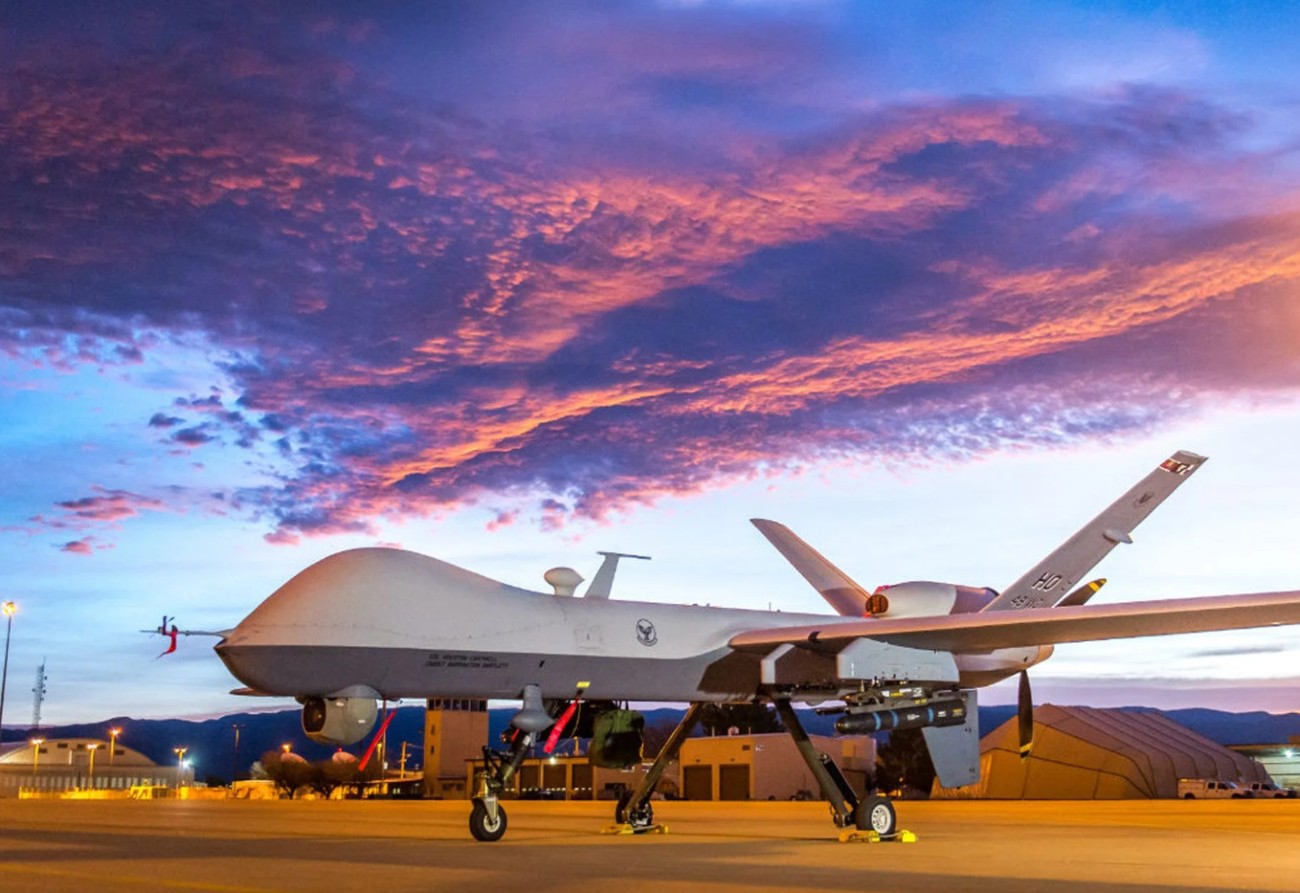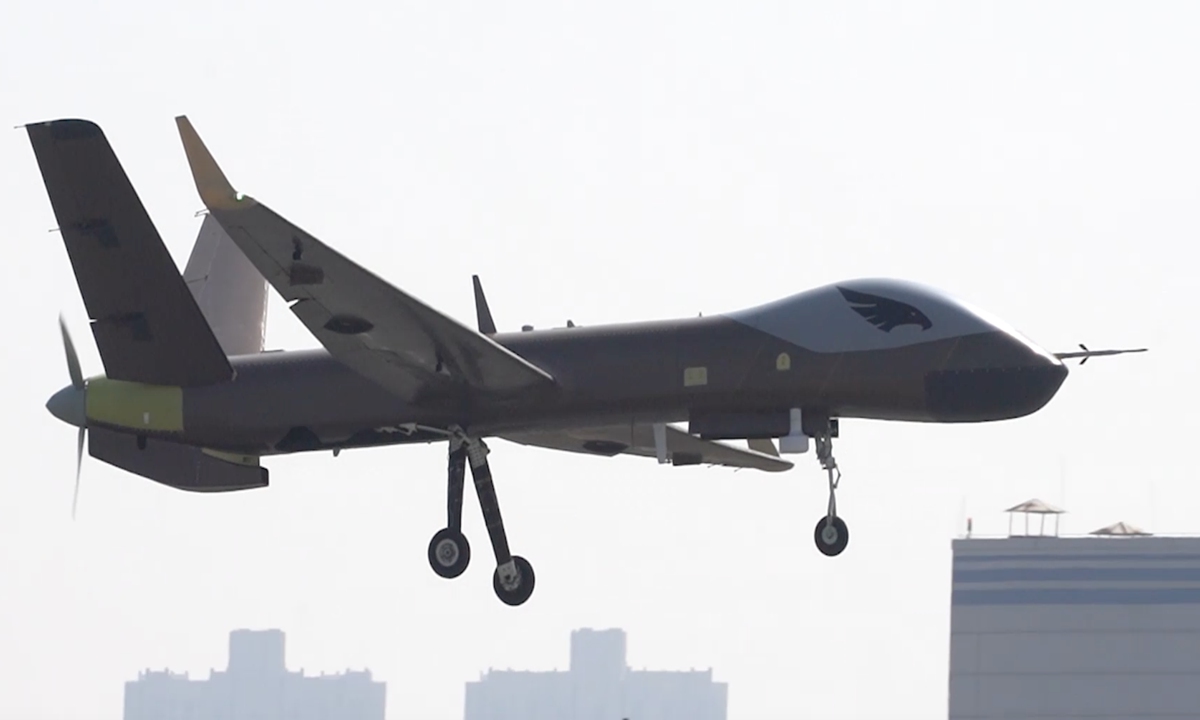A US MQ-9 Reaper drone was shot down by Yemen’s Houthi rebels’ air defenses a few days back on November 8. The Houthis claimed it was in Yemeni air space, while the US official insisted the drone was over international waters when shot down.
Meanwhile, the Houthis have launched drones and missiles toward southern Israel on at least four occasions since the October 7 Hamas attack on Israel. A Russian S-22 surface-to-air missile nearly hit an American MQ-9 Reaper drone over Syria on November 27, 2022, as stated by the US Central Command.
In March 2023, a Russian Su-27 buzzed an MQ-9 Reaper Surveillance drone over the Black Sea and doused it with jet fuel. The drone’s propeller was so significantly damaged that the US forces chose to crash it into the water.
There has been an increasing number of such encounters between the US and Russian aircraft in Syria and the Black Sea, and this is despite deconfliction protocols being in place between the two superpowers. The Americans finally chose to bring in an A-10 ‘Warthog’ Thunderbolt II to supplement the Predator drones. The A-10 can carry nearly three times the load for strike missions.
Earlier, on June 6, 2019, Houthis shot down a US MQ-9 Reaper over Yemen using an SA-6 surface-to-air missile (SAM) that was enabled with Iranian assistance. On August 21, 2019, another unarmed MQ-9 was shot down by Houthis over Dhamar, Yemen, using the Yemini-made Fater-1 missile, an improved SA-6.
On 23 November 2019, an MQ-9 was shot down by a Pantsir system operated by the Libyan National Army or Wagner Group over Tripoli, Libya.
Large Drones Viability In Contested Environment
The General Atomics MQ-1 (Predator) and later variant MQ-9 Reaper (Predator B) are unmanned aerial vehicles (UAV) that evolved after the end of the Cold War when the US did not expect a contested environment.
They were designed to maximize their ability to loiter while carrying a limited payload. They were not intended for evasive maneuvers. Large drones were initially used extensively for Intelligence, Surveillance, and Reconnaissance (ISR).
The November 8 incident has once again brought the drones of the MQ-9 Reaper class into a public debate about viability in the contested domain. These large drones are relatively expensive.
The 31 MQ-9 drones offered to India would cost slightly over US$3 billion. These are nearly as costly as F-16 class fighters. Much less expensive countermeasures could down these drones.
The US Air Force (USAF) has been reviewing its additional purchases as it sees itself operating in a much less benign environment than that existed in Iraq and Afghanistan. Critics say that notwithstanding the capabilities, these large drones fly very slowly and are thus highly vulnerable to SAMs and fighter action.
Also, they are too expensive to lose. If a fighter jet was just to come near a large drone and release IR flares, it could damage it with the metal disks that fly out of some countermeasures dispensing systems. The propeller or even some sensors are highly vulnerable.
Predator MQ-9 Platform
The MQ-9 Reaper (Predator B) UAV is capable of remotely controlled or autonomous flight operations. It is a large drone with a maximum take-off weight of 4,760 kg, including a payload of 1,700 kg. There are seven hard points. The 11m length and 20m wingspan make its dimensions bigger than some fighter aircraft’s.
The max speed is around 480 km an hour, and the maximum endurance is 27 hours. The service ceiling is 50,000 feet, though the operational altitude is 25,000 feet. The Reaper has a 950-shaft-horsepower (712 kW) turboprop engine.

The drone can carry up to eight AGM-114 Hellfire air-to-ground missiles or a combination of missiles and laser-guided bombs. Some models can carry air-to-air missiles. The drone has an airborne radar and a multi-spectral targeting system.
The SeaGuardian variant carries a marine search radar. The platform, sensors, and weapons are monitored and controlled by aircrew from a Ground Control Station (GCS), including weapons employment.
Once designed for intelligence, surveillance, and reconnaissance (ISR) roles, it now has a hunter-killer role. The USAF operated over 300 Reapers. 2035 is the projected end of the service life of the MQ-9 fleet.
The same is planned to be extended beyond 2040 after a proposed upgrade. While the Indian Air Force (IAF) and the Indian Army will likely acquire SkyGuardian, the Indian Navy will get the SeaGuardian.
Operational Use Of MQ-9
On October 28, 2007, an MQ-9 achieved its first “kill,” firing a Hellfire missile against Afghanistan insurgents. By March 6, 2008, the Reaper had attacked 16 targets in Afghanistan using 500 lb (230 kg) bombs and Hellfire missiles.
Since 2008, USAF has been flying Reaper missions in Iraq. Reapers also began anti-piracy patrols in the Indian Ocean. USAF has carried out tens of thousands of close air support missions with MQ-9s in Iraq and Afghanistan, where a significant number of drones were also used during combat operations. These drones saw actions in Ethiopia, Somalia, and Libya. In 18 years of operation, the MQ-1 and MQ-9 have completed over 2 million flight hours.
On 13 November 2015, an MQ-9 had killed ISIL member Mohammed Emwazi “Jihadi John.” In November 2017, the Reaper shot down a tiny, maneuvering aerial target for the first time.
On January 3, 2020, a US MQ-9 missile strike at Baghdad International Airport killed Qasem Soleimani, the commander of the Iranian Quds Force, and Abu Mahdi al-Muhandis, the deputy commander of Iraqi Popular Mobilization Forces. Many USAF drones crashed during training due to technical reasons such as starter-generator breakdowns.
Reworking The Large Drone Game
The Ukraine conflict has also shown that significant operational battle-zone effects can be achieved by using low-tech, cheaper kamikaze drones instead. These effects will multiply when a drone swarm is used.
A drone swarm would also saturate the enemy air defenses. Large loitering drones like Israel Aerospace Industries (IAI) Harpy and Harop have significant endurance and can make a Kamikaze attack, but they cost a lot. Some expensive drones can be recovered if not expended. But all these have technical and operational complexities.
Large drones have proved very well for ISR. Russia and China continue to develop drones of the same kind as the US. However, they must stay far away in contested domains to be safe.
Till now, the US has not made any design changes to MQ-9 despite the environment becoming more contested. Giving improved self-defense capability and high-G maneuverability would mean airframe design changes and compromises on endurance.
With many space-based constellations coming up in low earth orbit, part of the ISR role can best be done from space. The US military has been telling lawmakers that in its present state, the MQ-9 will be at high risk in any operational deployment against Russia, China, or even Iran.
However, the Reaper boasts the lowest cost-per-flying-hour of any high-end combat platform. The US government feels the MQ-9 can be more survivable by adding more self-defense capability and countermeasures.
Modernizing the fleet of nearly 280 MQ-9s currently with the USAF could mean an investment of around US$12 billion, which is modest by US budget standards. The proposal is to deploy them in lesser contested zones such as Africa or parts of Asia. The dilemma remains between cheap drones and those like the MQ-9.
There is a need to re-design and produce more survivable large drones. They must be stealthy, like the proposed Indian “Ghatak” drone. Also, there is a need to redefine the operational employability and roles of existing ones.
More stand-off sensors and weapons, perhaps. Improved AESA radar, self-defense electronic suite, and air-to-air weapons. Survivability can be increased by using self-protection pods against infrared and radio frequency-guided threats in contested environments.
The MQ-9 Block 5 Ghost Reaper concept of USAF rebrands the platform to be part of the Advanced Battle Management System (ABMS) as a node to connect fourth and fifth-generation aircraft with modern communication pods and secure data links.
Unmanned systems empowered by artificial intelligence will be very potent members of teaming with manned aircraft. The large drones could also act as a mothership for smaller kamikaze drones.
Large drones could support secure airborne communications to very long ranges. Drones are being modified with systems for “Joint Multi-Domain Operations.” They remain an essential asset for ‘Grey Zone” operations. It could mean more onboard power generation. All future drones would be stealthier and support Manned-Unmanned Teaming.
The USAF has published a Request for Information (RFI) seeking insight from industry for a future Next-Generation Multi-Role Unmanned Aerial System Family-of-Systems. The desire is to get the MQ-9’s functionality into a broader concept called the “MQ-Next.”
Many are questioning the idea, and no funding has yet been considered. The USAF has much higher funding priorities, such as the Next-Generation Air Dominance family-of-systems, the B-21 bomber, F-35 fighters, and the KC-46 tanker, among many others.
The MQ-9 could be adapted to carry air-to-air interceptors or directed energy weapons to counter air and missile threats to remote and forward U.S. bases, including during out-of-area contingencies. Meanwhile, the Reaper is reasonably well suited to the USAF and NATO’s Agile Combat Employment (ACE) because of its automatic take-off and landing capability, which allows operations from highway launch pads with minimal ground support and crew.
Large Drones Remain Significant For India
China already operates the Chengdu GJ series of drones, also called Wing Loong. These are in Medium and High Altitude Long Endurance (HALE) variants. They have armed combat variants (UCAV). China continues to develop more advanced variants.
Wing Loong II, which provided up to twelve air-to-surface missiles, entered the PLA Air Force (PLAAF) service in 2018. As per media reports, a new generation of high-speed, long-endurance drones powered by low-cost jet engines has entered military service in China.

Pakistan acquired the CH-4 UCAVs from China. They have used them to conduct strikes in Balochistan. They have the maritime variants also. The indigenous Burraq UCAV has been jointly developed and built by the National Engineering and Scientific Commission (NESCOM) and the Pakistan Air Force (PAF).
Shahpar-2 is another indigenous UAV. They also acquired significant numbers of the Turkish Bayraktar TB-2 UAVs. They have ordered the Bayraktar Akıncı HALE UCAV, deliveries that have just begun.
For a long time, India has been using the IAI Heron and Searcher UAVs for ISR roles. Once UCAVs are acquired, the IAF could use the armed drone to not only look across the mountain in the Himalayas for surveillance and attack ground targets but also use them to intercept cruise missiles.
A few large drones can create an airborne radar chain for sectorial radar cover. IAF could use these drones for ELINT, SAR, and electronic warfare roles.
Large drones will continue to play a significant role in maritime surveillance. The new extended-wing Reaper has an increased loiter time from 27 to 40 hours. They are much cheaper to operate than the P-8 Poseidon aircraft and can supplement the air effort.
They could also support creating an extended air picture and situational awareness in India’s Bay of Bengal and Arabian Sea. Lastly, large drones can significantly help civil administration in emergency response to detect and mitigate the effects of natural disasters.
For some time, large drones will continue to play a significant role in the Indian sub-continent. India must accelerate the development and production of the indigenous Tactical Airborne Platform for Aerial Surveillance-Beyond Horizon-201 (TAPAS BH-201) and the Ghatak UCAV.
India must encourage more private players to enter more significant UAV development. There is a need to work more aggressively on Manned Unmanned Teaming.
- Air Marshal Anil Chopra (Retired) is an Indian Air Force veteran fighter test pilot and is currently the Director-General of the Center for Air Power Studies in New Delhi. He has been decorated with gallantry and distinguished service medals while serving in the IAF for 40 years. He tweets @Chopsyturvey
- Follow EurAsian Times on Google News




